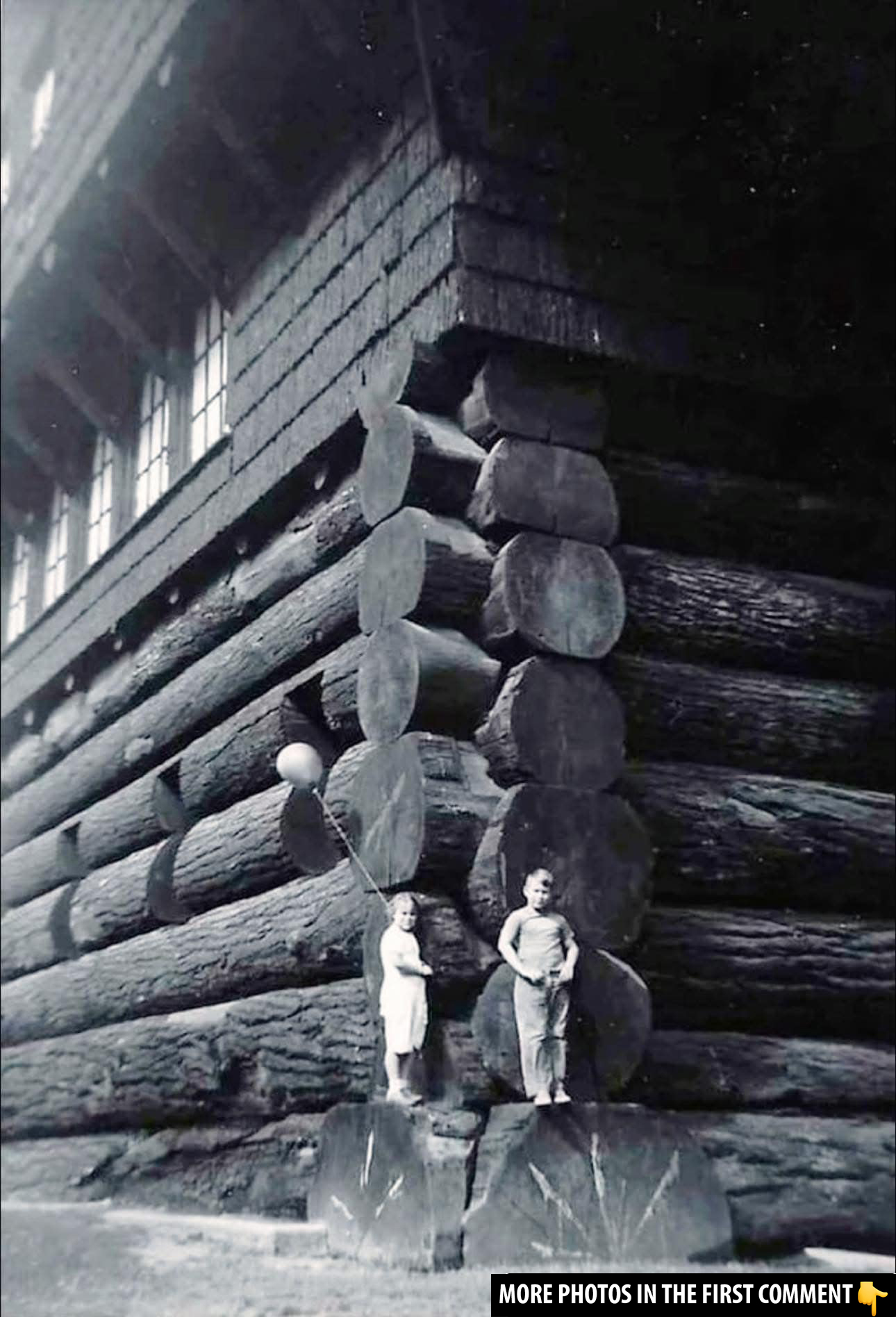In the early 20th century, the city of Portland was home to one of the world’s most extraordinary architectural marvels — a massive log cabin that was hailed as the “world’s largest log cabin,” albeit the second largest. The Forestry Building, constructed as part of the Lewis and Clark Centennial Exposition of 1905, stood as a monumental testament to the power and beauty of nature. But despite its grandeur and significance, the building was lost to a devastating fire in 1964, leaving behind only memories and vintage photographs to preserve its legacy.
The Construction of the Forestry Building
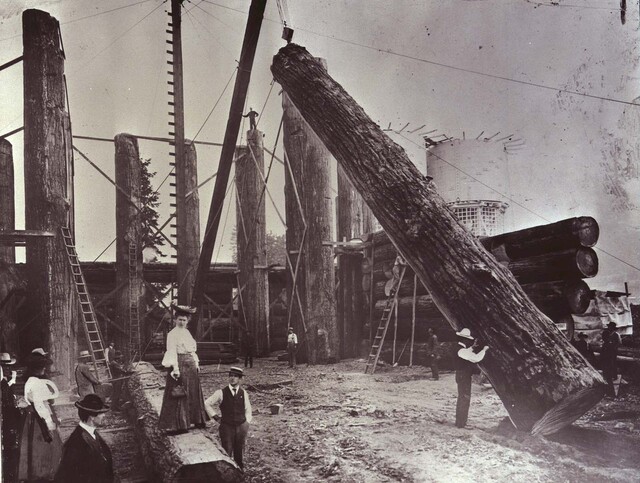
The story of the Forestry Building began with the grand vision of Portland’s participation in the 1905 Centennial Exposition. Designed to showcase the natural resources and the progress of the Pacific Northwest, the building was constructed using a staggering million board feet of lumber. The massive structure measured 206 feet long, 102 feet wide, and 72 feet high — roughly equivalent to a seven-story building. The project, with an estimated cost of $30,000 at the time (nearly $950,000 in today’s dollars), was spearheaded by lumber baron Simon Benson, who sourced the finest logs from Columbia County, Oregon.
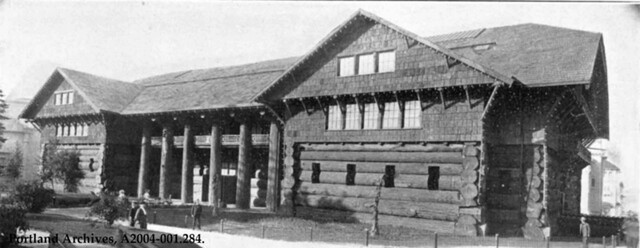
Architect Ion Lewis of the renowned Portland architectural firm Whidden and Lewis was tasked with the design. His concept was inspired by the region’s rustic traditions, and his young assistant, Albert E. Doyle, helped bring that vision to life. The building’s rustic design was unparalleled, with logs carefully selected to preserve the natural bark, creating a truly unique and striking structure.
Video
Check out this video to uncover the story of what happened to the second largest log cabin in the world and the mystery surrounding its fate.
Design and Architecture: The Vision of Ion Lewis
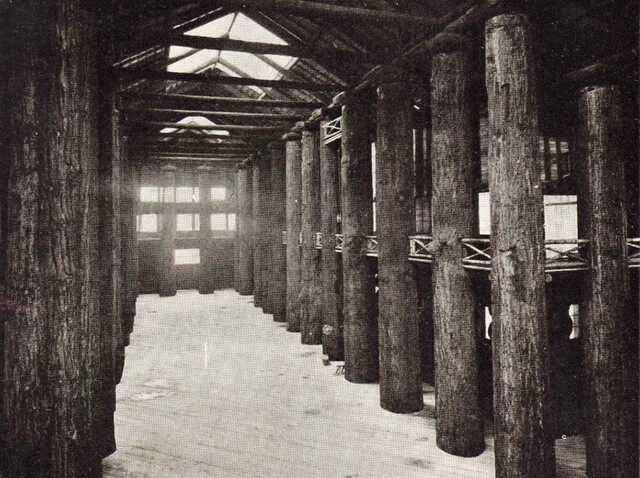
When the Forestry Building was completed, it wasn’t just a building; it was a symbol of rustic architecture on a grand scale. The colonnades inside the building were made of 54 unpeeled Douglas Fir trunks, each six feet thick. These logs were hand-matched and arranged like a string of pearls, towering over the visitors. The building’s interior was described as a “cathedral of giant trees,” with a nave of logs standing 48 feet tall. It was an awe-inspiring sight, evoking a sense of reverence and respect for the natural world.
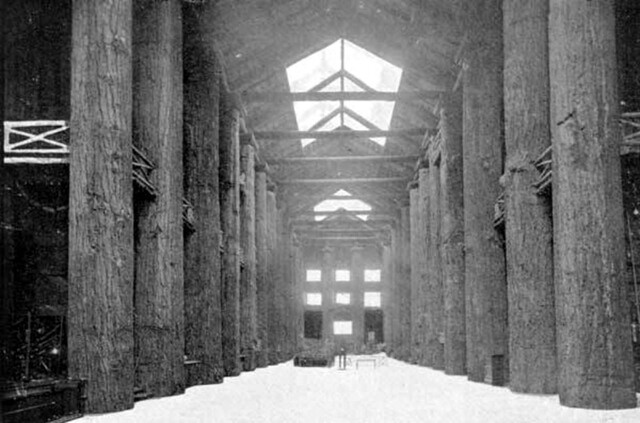
The building also featured a 2-story center aisle in a cruciform design, lit by skylights that allowed natural light to pour in, highlighting the raw beauty of the wood. Visitors to the building were invited to explore exhibits related to the forestry industry, local flora and fauna, as well as Native American artifacts. The Forestry Building was not only a stunning work of architecture but also a showcase of the region’s cultural and natural heritage.

The Interior: A Cathedral of Trees
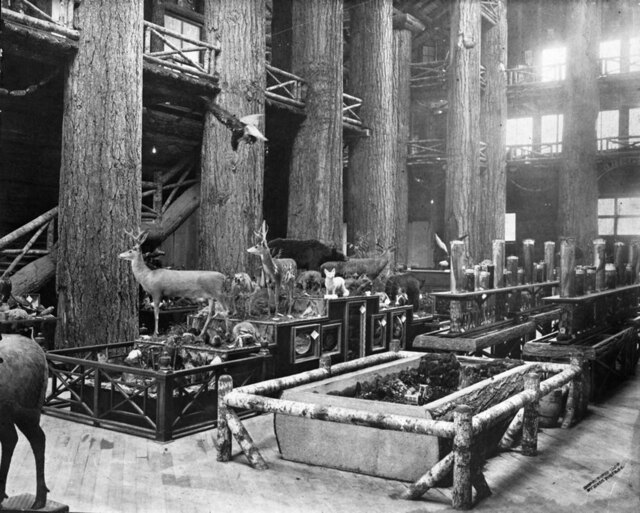
The interior of the Forestry Building was just as breathtaking as its exterior. The colonnades of massive tree trunks were a highlight, giving the space a cathedral-like feel. These towering logs, which had been carefully selected to retain their bark, stood as silent sentinels, framing the two-story center aisle. The building’s design was a celebration of the beauty of nature and the strength of the trees that had been harvested for the structure.
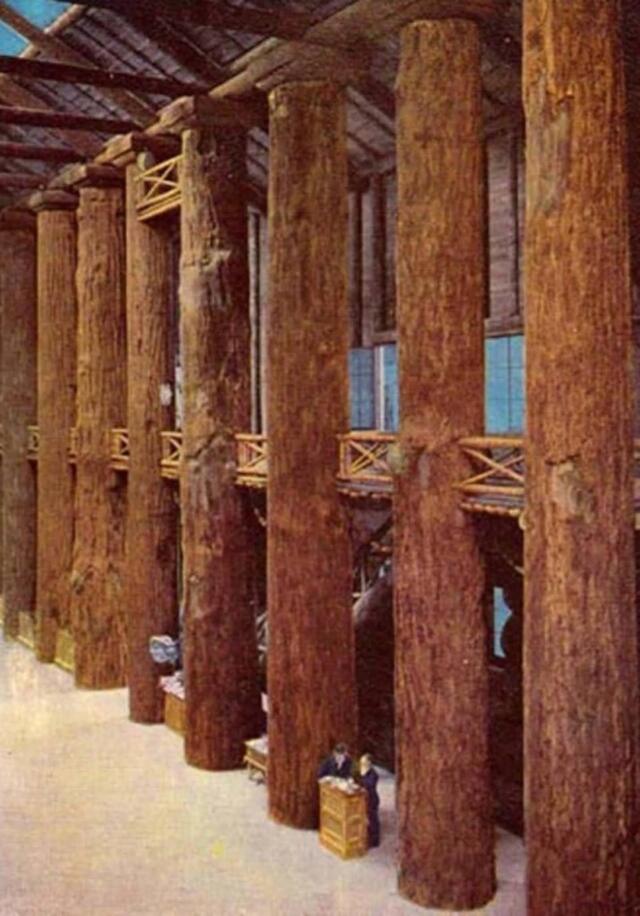
Visitors would walk through the building, marveling at the massive logs that supported the structure and the skylights that allowed the sun to filter through, creating a warm and inviting atmosphere. The building housed an exhibition that was just as impressive as its architecture, showcasing the region’s lumber industry, local wildlife, and Native American history. It was, without a doubt, the most popular attraction at the Exposition, cementing its place in the hearts and minds of those who visited.

The Forestry Building as a Symbol of Oregon’s Heritage
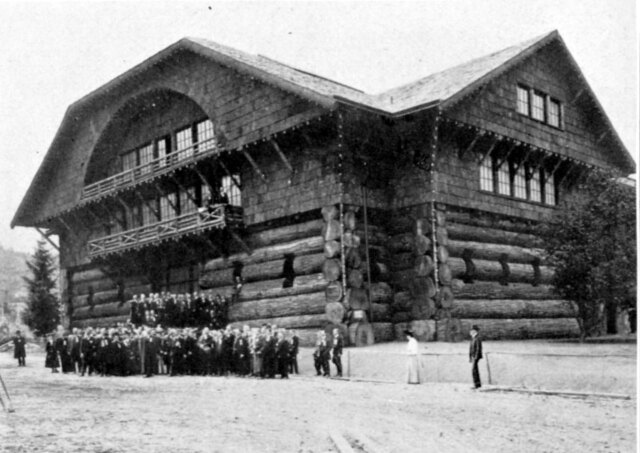
Beyond its architectural splendor, the Forestry Building was also a symbol of Oregon’s rich heritage. The building was designed to celebrate the natural beauty of the region, and its exhibits highlighted the importance of forestry to the local economy. The forestry industry had played a vital role in the development of Portland and the surrounding areas, and the Forestry Building served as a tribute to that.
Inside the building, visitors were treated to a variety of exhibits that showcased the diverse flora and fauna of Oregon, as well as the culture and history of its indigenous people. It was a space that not only celebrated the natural world but also recognized the importance of the people who had lived and worked in the region for centuries.
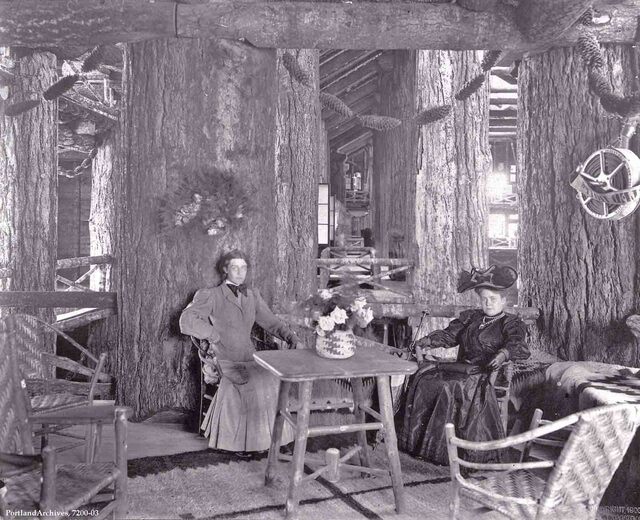
Post-Exposition Life: The Building’s Decline
When the Lewis and Clark Centennial Exposition ended, the Forestry Building was purchased by the city of Portland. Unfortunately, it would not be long before the building began to fall into disrepair. The structure, which had been such a symbol of the city’s achievements, was left uncared for, and by the 1920s, talks of dismantling the building and salvaging the valuable logs began. However, the proposal was rejected, and the city refused to pay for repairs.
As the years passed, the building became a safety hazard. It was closed to the public, and the once-magnificent log cabin stood empty and neglected. Despite the city’s failure to maintain the building, the Forestry Building remained a beloved symbol of Portland’s past.

The Near Miss: A Fire That Almost Destroyed the Building in 1914
In 1914, the Forestry Building came dangerously close to being lost in a fire. When the California Building caught fire during an event, burning embers were blown onto the roof of the Forestry Building. Fortunately, the quick action of the fire department prevented the flames from spreading, and the building was saved. However, this close call was a stark reminder of the building’s vulnerability, and the years of neglect only increased the risk of further damage.
The Final Days: The Tragic Loss of the Forestry Building in 1964
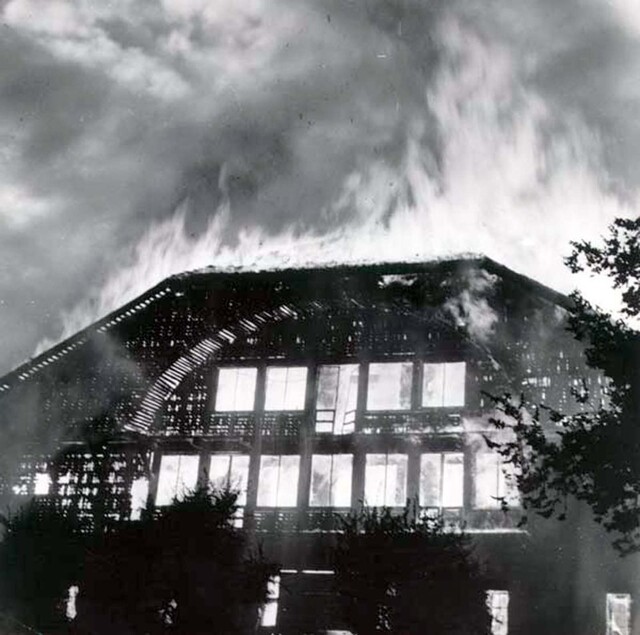
The Forestry Building’s fate was sealed in 1964 when another devastating fire broke out. This time, the fire could not be contained. The fire started due to faulty electrical wiring, and within minutes, the entire building was engulfed in flames. The fire was so intense that the flames shot almost ten stories high, illuminating the sky for miles around. The building, which had once stood as a proud symbol of Portland’s heritage, was reduced to rubble.

The fire that destroyed the Forestry Building was witnessed by many Portland residents, and it became a tragic event in the city’s history. “There was never a hope of saving the building,” reported the Oregonian the next day. “Nothing was saved from the inside.” The loss of the Forestry Building was felt deeply by the community, and it marked the end of an era for Portland’s architectural landscape.
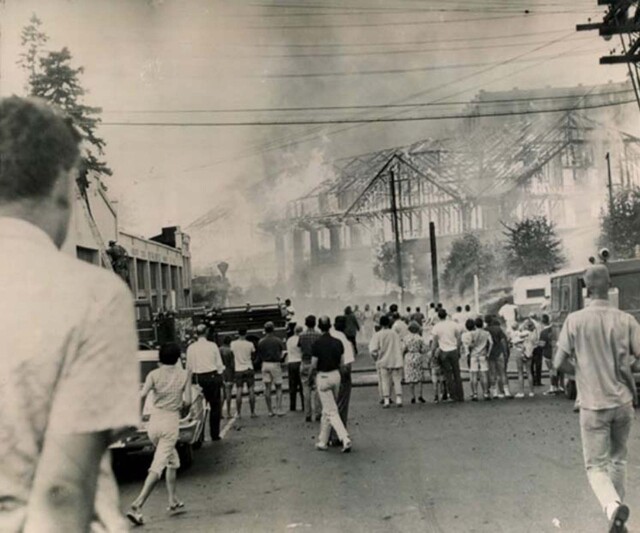
Legacy of the Forestry Building: What Remains Today
Though the Forestry Building was lost to the flames, its legacy lives on. Vintage photographs and historical documentation provide a glimpse into the grandeur of the building and its importance in Portland’s history. The building’s design and construction were ahead of its time, and its influence on rustic architecture can still be felt today.
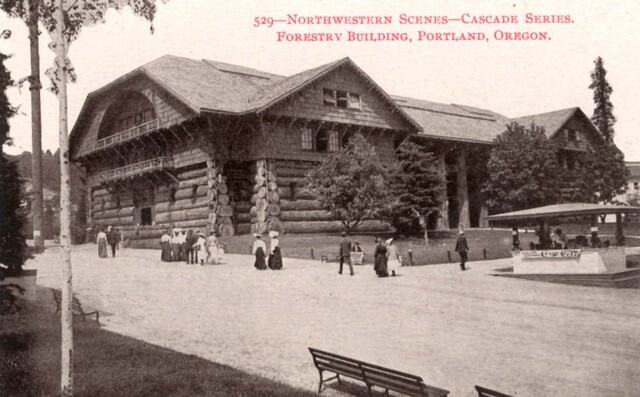
Visitors to Portland can still admire the building through photographs and historical exhibits, and its impact on the city’s architectural history is undeniable. The Forestry Building, while gone, remains an integral part of Portland’s story, a reminder of the city’s rich cultural heritage and the towering strength of the trees that once defined the region.
More photos of The Forestry Building
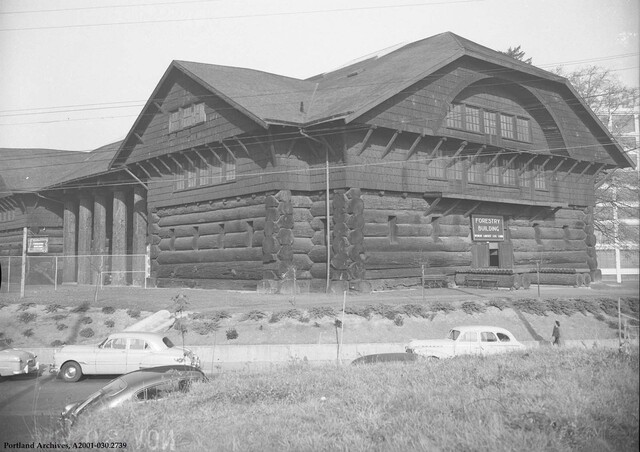
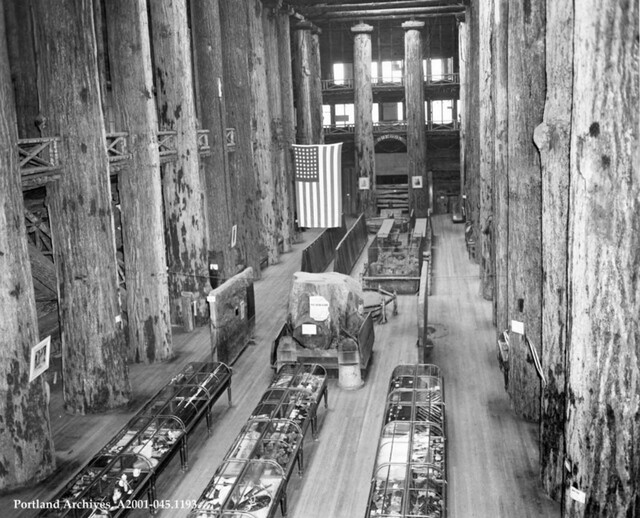
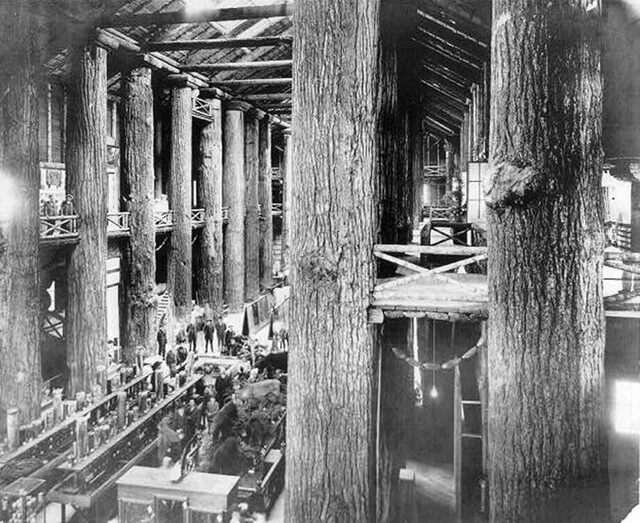
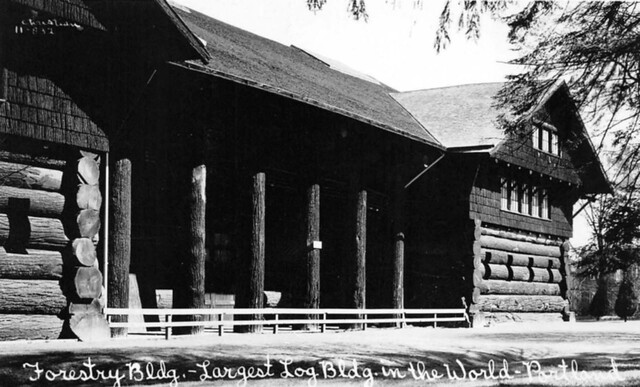


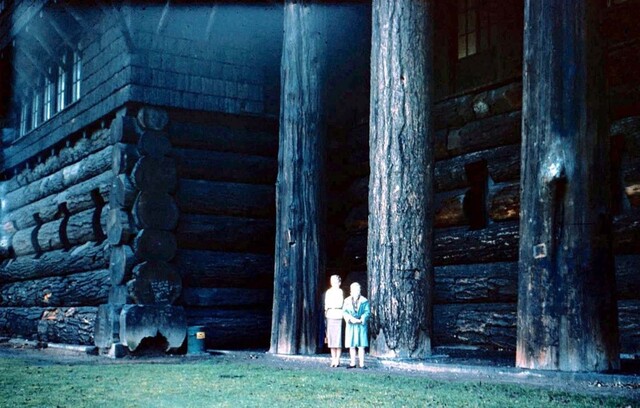
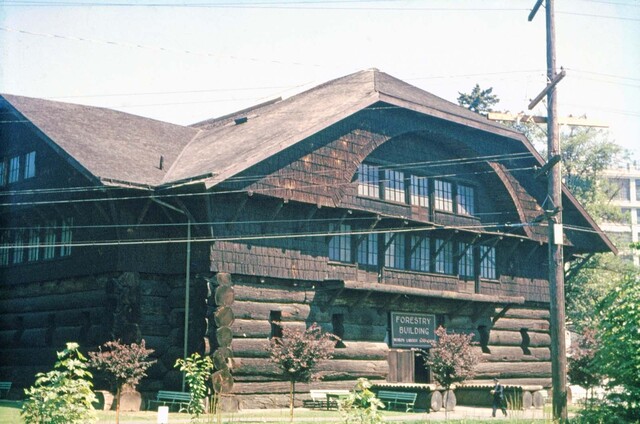
Video
Watch this video to explore the Portland Building and the debate over whether all architecture worth saving is beautiful, delving into its unique design and history.
Conclusion: The Forestry Building’s Enduring Memory
The Forestry Building was more than just a building; it was a symbol of Portland’s natural beauty and architectural ingenuity. Standing tall as a testament to the region’s heritage, it captivated visitors with its rustic grandeur and became a beloved part of the city’s history. Though it was tragically lost to fire, the Forestry Building’s legacy endures through the memories of those who experienced its awe-inspiring presence and through the photographs that continue to tell its story. It was a magnificent structure, and its place in Portland’s history will never be forgotten.
